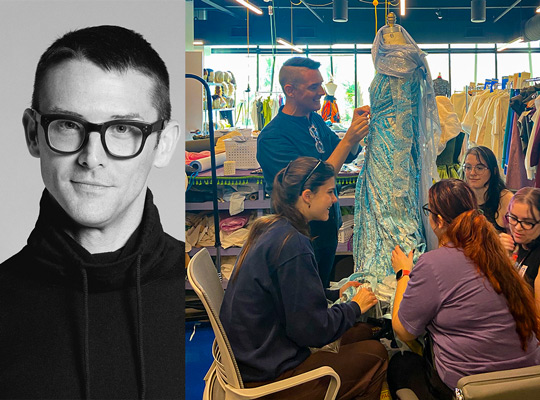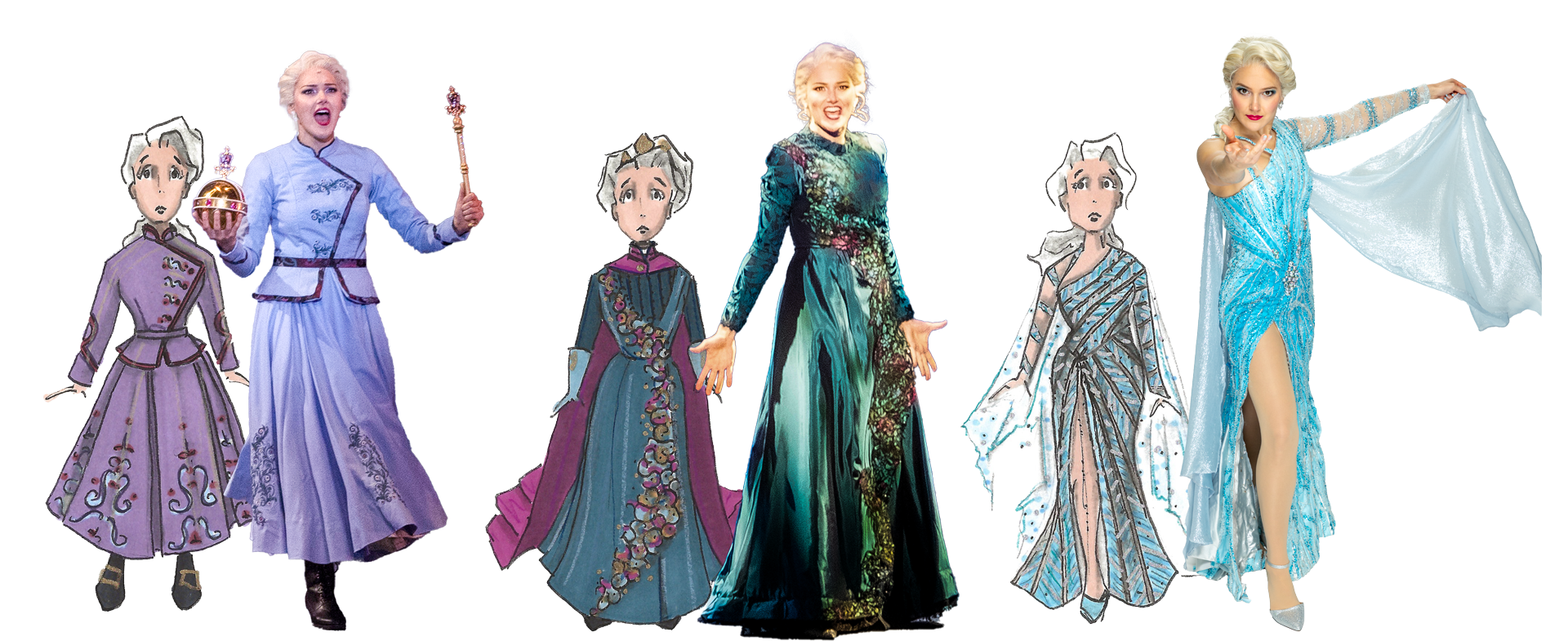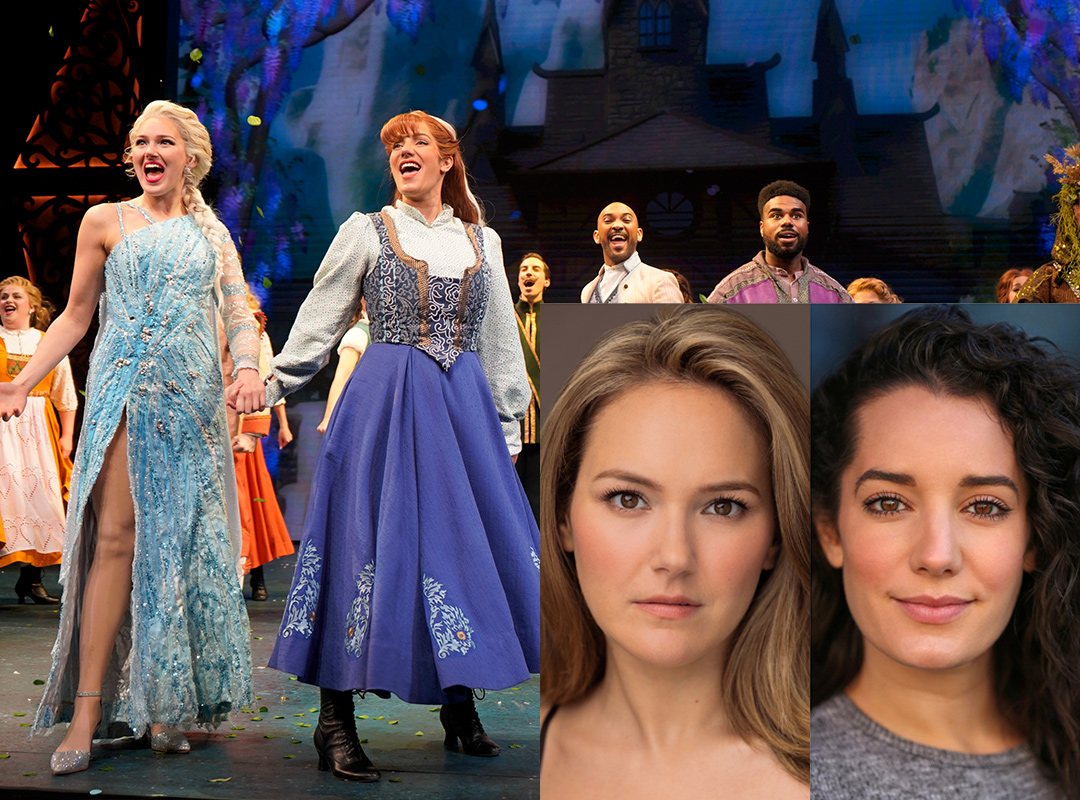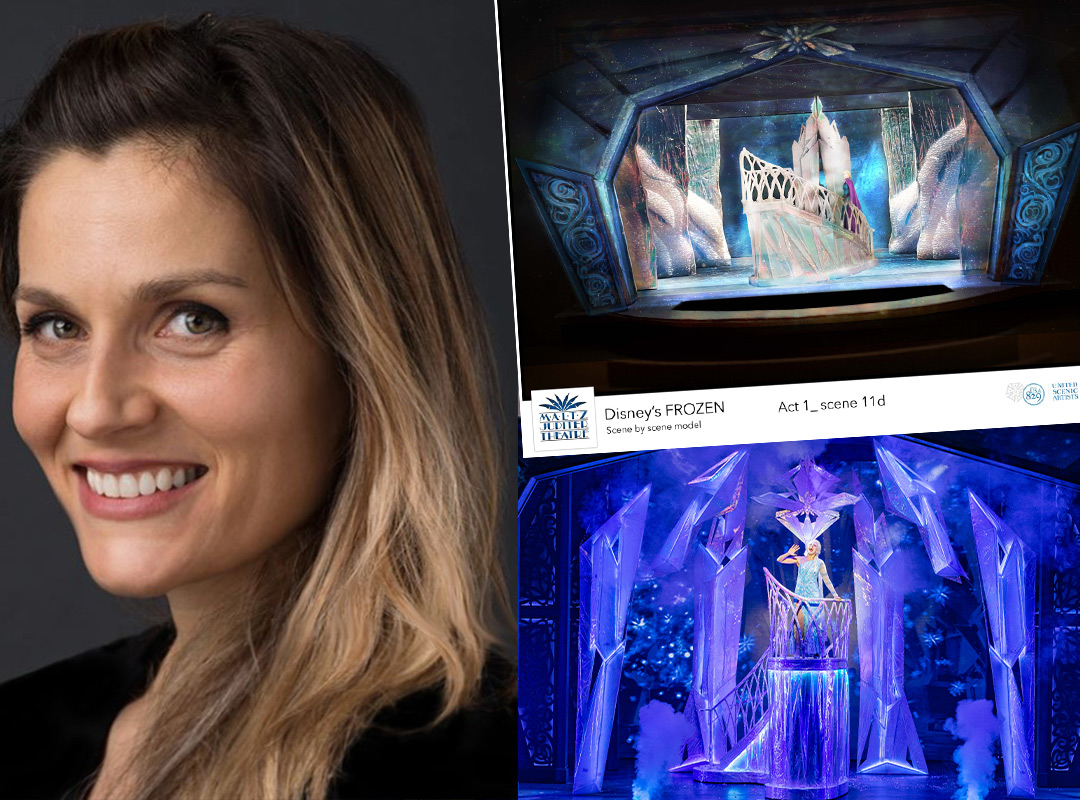





The Iconic Costumes of Disney’s Frozen

A Conversation with Costume Designer Leon Dobkowski
MIRIAM COLVIN: Do you approach your design process differently for a Disney musical?
LEON DOBKOWSKI: I really like to look at existing things, existing groups of people, existing ways of living, and then turn them into and infuse them into the story that I’m trying to tell. What I’ve liked about this design process is creating a truth to it. Now I say “truth” and we have a woman who goes into exile and creates an ice castle out of the powers that have been given to her. I understand what I’m saying, but for me it’s been rooting it somewhere that makes sense to me and makes sense to the entire trajectory of the story. I think there’s something about these stories that does help you break away. I just think for me it’s so much easier if there’s a set of rules to begin following.
MIRIAM COLVIN: This play switches between a very real Scandinavian-Based World in Arendelle and a very fantastical world when we get into the Winter forest and Elsa’s Ice Castle? What was the research process like in creating these two worlds?
LEON DOBKOWSKI: I found this great book. It was all in Norwegian, so I had to translate most of it, as I was researching it, but it was published in the nineties. The traditional garment of Norway is the Bunad. It has been around for centuries. We went through this whole thing that maybe our kingdom is very about symmetrical living, things mirror each other, and then Elsa and the hidden folk just break away from that. So maybe once Elsa gets away, her clothes become much more asymmetrical, and things go off to one end. It becomes more organic and the environment and of nature as opposed to this thing that’s been built.
MIRIAM COLVIN: Disney has some confines of what designs can or can’t look like. Did these specifications bring up any troubles for you in your process?
LEON DOBKOWSKI: If a little girl comes to see the show, they’re going to want to say, that’s Elsa and that’s Anna. That’s the task. That’s the job. If you hire me to do Frozen at New York Theater Workshop downtown with a shoestring budget, maybe I do a whole different thing. That’s a different job, right? That’s a different task. I think a good designer is always striving just to tell the story in your way from your point of view, from your past experience.
I’ve done many shows in different places. The same show can take on completely different points of view and completely different lives because of the people and the place that we’re doing it. That’s the joy about live theater as opposed to film. It is very in the now, no matter when the story is, it’s very in the now.

MIRIAM COLVIN: Do you have a favorite genre or type of theatre to design for?
LEON DOBKOWSKI: I’m very charged about whatever’s going on around me, but I’m easily drawn into a lot of different stories and thoughts. You know, I like working with passionate people. That is what I really think that is what kind of gets me, if everyone’s really diving in. I never sat alone and drew, I like interaction. I like fittings. If you’re part of the process, I think you get a really cool product and something different.
MIRIAM COLVIN: Can you talk more about what you mean by this collaborative process? Any examples?
LEON DOBKOWSKI: I always say, collaboration is one of those words that’s really fun and really great, and everybody in the theater loves to collaborate until they have to compromise. I think the two go hand in hand. Theatre is not alone, it’s not something you do by yourself. It doesn’t really work that way. You have to involve other people. You need people to put on the clothes. You need people to dance on the set. You need people to move the set. You need something to light. You need someone to pay for it. These things are really kind of important, and I think sometimes we forget that it is about compromise.
MIRIAM COLVIN: Why do you think Disney’s Frozen, The Broadway Musical is in the “now” that you’ve described?
LEON DOBKOWSKI: It’s a little bit about kindness. It’s a little bit about mental health. Don’t we all need to run into the woods every once in a while and take a break from it all, and just calm and chill? Can we all understand what that would be to just get away? The magic will come as long as you keep what you’re doing rooted in some type of truth, in some type of grounding rules for the world that you’ve created.









